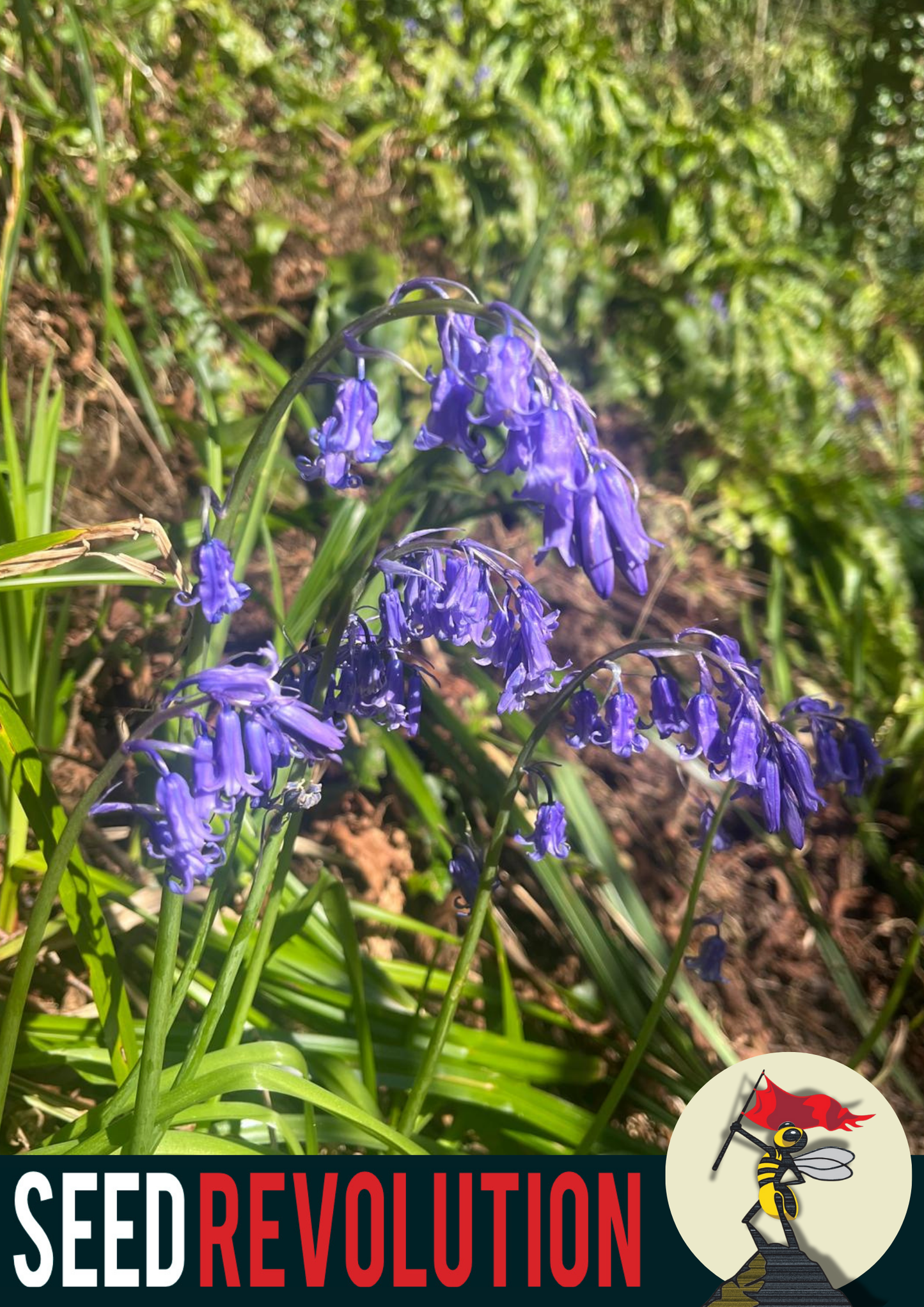My Store
Bluebell Native Wildflower Seed
Bluebell Native Wildflower Seed
Couldn't load pickup availability
Hyacinthoides non-scripta
Other names: english harebell, witches thimbles, lady’s nightcap
*It takes from four to six years to grow a flowering size bulb from seed.*
Did you know half of the world’s bluebell population is grown here in the UK? The flower is for so many of us such an entrenched symbol of our identity – the sight of them stirring memories of long spring frolics in shady woodlands. They’re a shimmering lilac icon to be cherished. Which is exactly why we should be all planting them all of them time. This symbol of fuzzy warm childhood memories is under threat by an invader – the Hybrid bluebell! A crossbreed of the Spanish and British bluebell.
These Half-Hispanic cousins threaten our native species, being able to grow much faster and stronger. But they lack the delicate perfume of our native flower and should be avoided at all costs. The two are distinguishable as a native bluebell droops, while the Spanish flower around an upright stem.
It’s time to say, ‘hasta la vista baby’, from these unwanted overseas invaders, and buy some of our native bluebell seeds today.
How to Plant
Cheap and Easy Method:
For a straightforward approach, simply scatter the Bluebell seeds directly onto bare soil. This method requires minimal preparation but has a lower success rate as it heavily relies on natural conditions being favourable. Clear the area of any debris and lightly rake the soil to create a loose surface. Evenly broadcast the seeds across the soil, then lightly rake again to ensure good seed-to-soil contact.
More Involved Method:
For better results, especially in areas with aggressive weeds or where the soil may be particularly challenging, consider using a terram membrane. This method involves laying a terram membrane over the planting area to suppress unwanted vegetation. Over this membrane, add a layer of soil that is suitable for Bluebell growth. Sow the seeds evenly across the soil surface and gently press them in to ensure good contact. This method, while more expensive and labour-intensive, greatly enhances the likelihood of establishing a vibrant and sustainable display of Bluebells.
Alternative Methods:
- Seed Trays and Transplanting: Start the seeds in seed trays or small pots indoors. Once the seedlings are large enough to handle, transplant them to their final growing location. This method allows you to control the early growth stages better and protect the young plants from adverse conditions.
- Direct Sowing with Mulch: Scatter the seeds directly onto prepared soil and cover lightly with a thin layer of mulch. The mulch helps retain moisture and suppress weeds, giving the seeds a better chance to germinate and establish.
When to Plant
The optimal time to plant your Bluebell seeds is in the autumn (September to November). Planting in autumn allows the seeds to undergo a natural cold period, which is essential for their germination. Early spring (March to April) is also suitable if you missed the autumn window.
Where to Plant
Bluebells thrive in shaded or partially shaded areas, making them perfect for woodland gardens, under trees, or along shaded garden borders. Choose a location with well-drained soil that is rich in organic matter. They prefer slightly acidic to neutral pH soils.
Watering Schedule
During the initial establishment phase, maintain a consistent moisture level in the soil, keeping it moist but not waterlogged. Water the seeds gently to avoid washing them away. Once the plants are established, they typically require minimal watering, relying on natural rainfall. However, during prolonged dry spells, occasional watering may be necessary to maintain healthy growth.
Blooming Period
It takes from 4-6 to six years to grow a flowering size bulb from seed. Bluebells will generally bloom in the spring, from late April to June. The exact timing can vary based on regional climate specifics and yearly weather variations.
Expected Plant Height
Bluebells typically grow to a height of 20 cm to 50 cm. This variation creates a beautiful, dynamic appearance that provides depth and interest, while also supporting a diverse range of wildlife and pollinators.
Summary of Planting Methods
Cheap and Simple Method:
- Scatter seeds directly onto bare soil or in pots/growing boxes.
- Lightly rake the soil before and after scattering seeds.
- Suitable for small and large areas.
More Involved Method:
- Use a terram membrane to suppress weeds.
- Add a suitable soil layer over the membrane.
- Sow seeds and press them in gently.
- More labour-intensive but higher success rate.
Alternative Methods:
- Seed Trays and Transplanting: Start seeds indoors and transplant seedlings.
- Direct Sowing with Mulch: Scatter seeds and cover lightly with mulch.
No Grow No Fee
Minimum of 2 years post sowing before claim can be made.
Share


